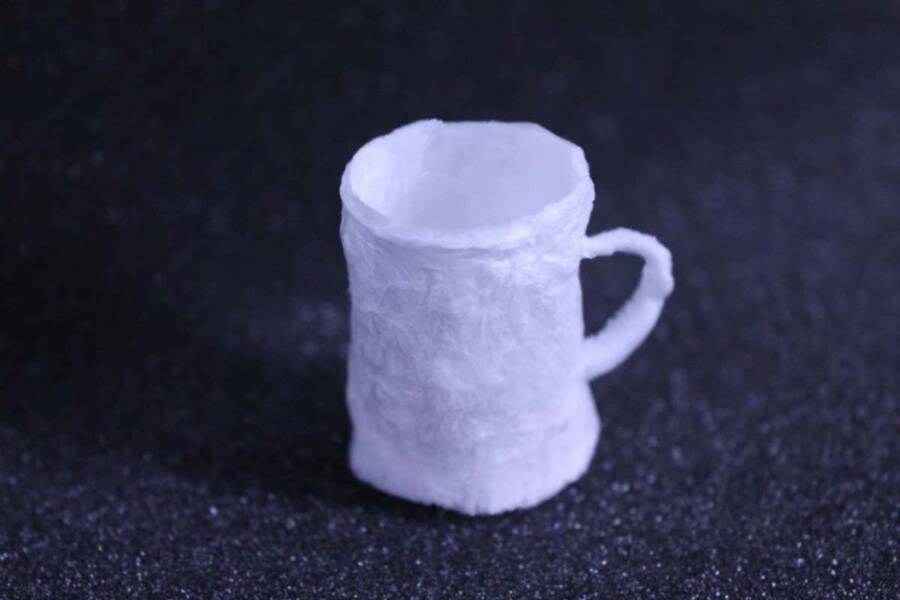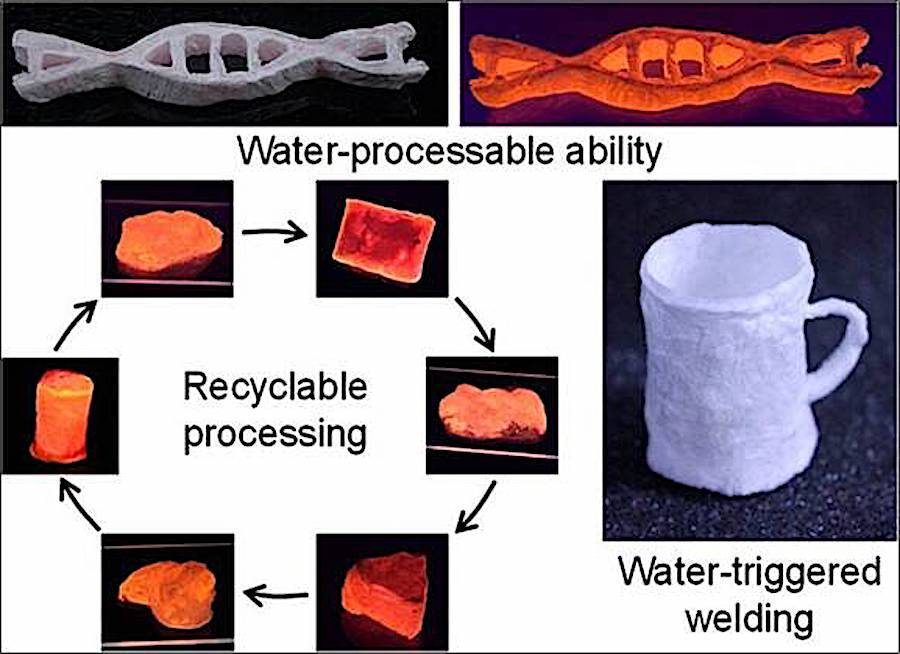The researchers combined salmon sperm with vegetable oil to create a sustainable bioplastic that can be broken down and recycled just by adding water and freeze-drying.

PixabayBy harnessing natural resources, scientists hope to produce a plastic alternative that’s better for the environment.
Planet Earth has a problem: plastic. Made from petroleum, it’s bad for the environment, hurts animals, and takes a lot of energy to produce. But scientists in China may have come up with a possible solution — by making an eco-friendly plastic alternative using salmon sperm.
“Plastics play important roles in modern life and currently the development of plastic recycling is highly demanding and challenging,” scientists from Tianjin University explained in a study published in the Journal of American Chemical Society.
“To relieve this dilemma, one option is to develop new sustainable bioplastics that are compatible with the environment over the whole material life cycle.”
With the hope of making a more eco-friendly plastic, the scientists experimented with salmon sperm. By combining it with water and an adhesive chemical derived from vegetable oil, they created a squishy substance called hydrogel.
This gel can be molded into different shapes and produces 97 percent less carbon emissions to manufacture than plastic derived from petroleum. It then must be freeze-dried, which removes all the moisture and allows the shape to harden. To test out their new bioplastic, scientists made a little white mug, puzzle pieces, and a DNA molecule.

American Chemical SocietyThe mug scientists constructed out of hydrogel.
“We report a sustainable bioplastic made from natural DNA and biomass-derived ionomers, termed as DNA plastics,” the scientists announced in their study.
DNA plastics, the scientists explained, improve plastic production every step of the way. It uses material from renewable resources, is produced in an environmentally friendly way, can last a long time, and is easily recycled.
What’s more, DNA plastic does not need to be made from only salmon sperm. Other natural materials like fruit and algae would work just as well.
But the sustainable plastic does have some limitations. For one, it absolutely cannot get wet. Though this is part of its design — and allows it to be easily recycled or reused — it also means that DNA plastic couldn’t be used to make things like functional cups or plates.
And while is possible to make the material waterproof by adding several protective coatings, the researchers say that would make it more difficult to recycle.
Instead, scientists imagine it could be used for things like electronics. Since electronic devices have plastic parts and must stay dry, DNA plastic could be a good substitute for regular, petrochemical plastic. It could also be used as a packaging material.
“This work provides a solution to transform biobased hydrogel to bioplastic,” the scientists said in their study, “and demonstrates the closed-loop recycling of DNA plastics, which will advance the development of sustainable materials.”

American Chemical SocietyA simple diagram demonstrating how scientists produced the mug and showing how the DNA plastic can be recycled.
Still, the scientists noted that mass production of DNA at the scale needed to make DNA plastic a viable alternative remains challenging but not impossible.
“The potential of DNA that is rapidly and massively produced by the market is of great importance for future applications of DNA plastics,” they said.
Currently, humans produce a jaw-dropping 300 million tons of plastic every year. Most of this plastic cannot be broken down. Instead, it seeps into drinking water and food supplies. Plastic also makes its way into the natural world, where it’s responsible for the deaths of one million birds and 100,000 sea mammals annually.
Biodegradable plastics do exist. But some aren’t as good for the environment as they seem. A study conducted in New Zealand found that of 37 items that claimed to have been made with bioplastics, more than half contained environmentally harmful petroleum-based plastic.
Other so-called bioplastics, made with materials like cornstarch, require high amounts of energy to make and can be difficult to recycle.
As such, the scientists say that their DNA plastic made by salmon sperm offers a path toward producing environmentally friendly plastic. If this material could be harnessed and produced en masse, it could potentially solve a global problem.
Until then, plastic consumption around the world will continue to damage the environment, kill animals, and leak into the food and water supply.
After reading about plastic made with salmon sperm, learn about how scientists want to send sperm to a lunar doomsday vault. Or, discover the story of the world’s oldest sperm found preserved in amber.





